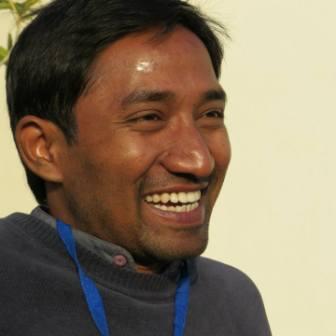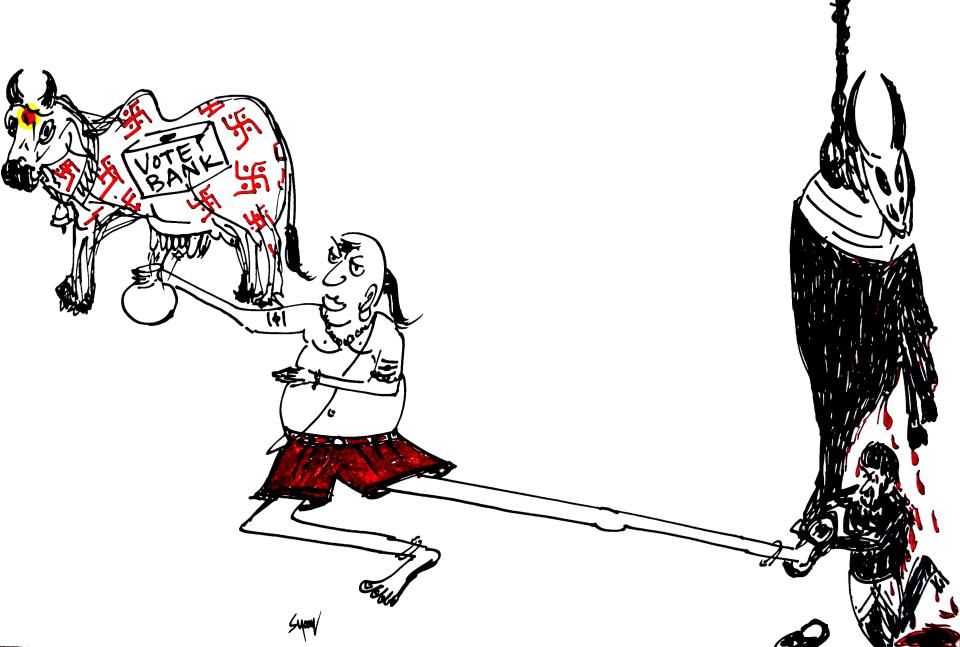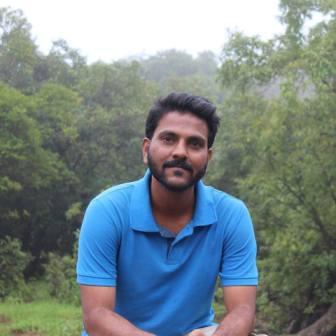Subodh Kunwer
 Has the Corona virus pandemic become something other than a medical subject/disease? The handling of this pandemic brought many crises, events and spectacles to the fore. While on one side lives of people are being lost, on the other we are witnessing the theatrical, performative aspect of the pandemic. Jennifer Cooke in her book Legacies of Plague in Literature, Theory and Film, drawing from Antonin Artaud’s ‘The Theatre and the Plague’,and Albert Camus’ ‘The State of Siege’, focuses on the fact that the effect of plague [pandemic] has an inherent theatricality, a fact that has not gone unnoticed by many playwrights. This write up sure will be called as audacious, perverted and insolent. Let it be called so. We have the example of Antonin Artaud who viewed plague in his essay ‘Theatre and the Plague’ as a theatrical and, theatre as plaguelike in its spectacle and its physical effect. Albert Camus’s play “The State of Siege” as a companion to his novel The Plague presents an analogy for dictatorship and fascism.
Has the Corona virus pandemic become something other than a medical subject/disease? The handling of this pandemic brought many crises, events and spectacles to the fore. While on one side lives of people are being lost, on the other we are witnessing the theatrical, performative aspect of the pandemic. Jennifer Cooke in her book Legacies of Plague in Literature, Theory and Film, drawing from Antonin Artaud’s ‘The Theatre and the Plague’,and Albert Camus’ ‘The State of Siege’, focuses on the fact that the effect of plague [pandemic] has an inherent theatricality, a fact that has not gone unnoticed by many playwrights. This write up sure will be called as audacious, perverted and insolent. Let it be called so. We have the example of Antonin Artaud who viewed plague in his essay ‘Theatre and the Plague’ as a theatrical and, theatre as plaguelike in its spectacle and its physical effect. Albert Camus’s play “The State of Siege” as a companion to his novel The Plague presents an analogy for dictatorship and fascism.
The number of cases of coronavirus infection has been increasing and so has the number of deaths too. Countries all over the world have gone into complete lockdown to contain the disease. India too is under complete lockdown. In India, we witnessed two grand theatrical events in the wake of the corona virus, one on 22nd of March – the Janata Curfew culminating in an event of clapping, banging on plates, and ringing bells. And the other on April 5, 2020, celebrating the lockdown, the virus, with diyas, candles and fireworks. Going beyond their limits, the great citizens of the great country took to streets taking out processions and marches. All these events were performed by the citizens of the country on the appeals of Prime Minister Narendra Modi. These events were performed from metro cities to small villages. The chanting of “go corona go” “corona shaant ho jaao” could be heard everywhere. Brahm Praksh reasons that “it seems India has resolved to fight the pandemic on cosmic, divine and mythical planes…….While the crisis is human, Modi offered a divine and cosmic solution.”1
In yet another face of the pandemic we see the exodus of migrant laborers, the poor population, from cities to their villages, walking hundreds of kilometres, facing police brutality, exposing themselves to more vulnerability in search of food and a satisfied place to live. Harish Wankhede describes:
‘Cities are soulless. These giant buildings, grand palaces, historic monuments, big religious shrines, large farmhouses and spacious residential apartments are divorced of humanity. Take any city today Delhi, Mumbai, Hyderabad or Kolkata, the truth remains: there is no place for the poor and migrants, when crises struck them brutally.
As the poor laborers were walking away from the city, no one bothered asking them to stay back with a promise that the city would take care of their lives. No government, no civil society, no NGO, no intellectuals seemed eager to convince the migrants that this is their own city, that they have built and served it with their blood and sweat and therefore it is the responsibility of the ruling classes to protect and take care of the people. Instead, without any help, hordes of workers, women and children are walking tirelessly on national highway to reach from where they have come to serve this great city.’2
Citizens of the country performed the cacophony of clapping, banging on plates, celebrated it grandly on their balconies, rooftops, streets, roads. The event was meant to praise the effort of health workers. Was the purpose achieved? The health service workers from doctors to nurses are being stigmatized and thrown out of their houses. The inherent irony in the spectacle of celebrating the corona virus pandemic, while the health workers continue the struggle to tackle the challenges of basic tools and technology of safety must not be lost on us.
The responses to the pandemic in our country showcases the responses of two strikingly contrasting worlds -one devoid of imaginations of any policy or initiative action by the government, fated to suffer and unwillingly embrace death; and the other performs at the Prime Minister’s appeal where the “sympathetic” acts/events turn in to a celebration – a celebration of deaths. Even after it has been well understood that the corona virus pandemic can affect anyone, irrespective of caste, race, gender or religion, the citizens [the nation considers only a few as complete citizens] enjoy performing these events/spectacles. I won’t hesitate to say that whatever festivals India celebrates, the celebration of deaths of Asura- Bahujans is embedded in its genealogy, in its myths – Diwali – celebration the death of Ravana; Dussehara – celebration of death of Mahisasura; Holi – celebration of death of a woman Holika, only to name a few.
The trope of these myths remains the same – victory over “evil”; in today’s case – performing the celebration or the event is to keep fighting corona pandemic – the “evil”. Earlier the victory over “evil” brought about and secured Brahmanic and casteist rule and culture. I am curious for what the present fight against the “evil” Corona would bring. Will the current dangerous virus strengthen the virus of Casteism–Brahmanism? Ask me this and I will nod in affirmation.
Actually, the corona pandemic has emerged as a real representation of the casteist-brahmanic societal structure which embodies and pursues divisive casteism, brahmanism and racism. Look at what the behavioural solutions in fighting the virus are- the formula of social distance, lockdown, quarantine, hand sanitizing and so on to prevent the Corona pandemic since there is no medical solution yet. The practice of inhumane untouchability [a basic tenet of caste society] got reaffirmed in the wake of this Corona pandemic cutting the caste-class line, as Harish Wankhede says,
‘there is a growing acceptance within the middle classes that everybody is ‘untouchable’ today. From someone at the highest levels of power to a beggar on the street, anyone can be the carrier of the deadly disease. Each body is suspect and dangerous as it can contaminate with a mere touch. We are treating each one as an impure ‘other’ and disciplining ourselves to keep a safe social distance.’3
The measures of social distancing and quarantining are practically impossible for the Bahujans. These measures remain enjoyable almost exclusively to the wealthy class of our society. The authoritative measure of lockdown was taken keeping in mind the safety of everyone irrespective of caste, class, gender, religion and race. The unfortunate truth is that the sudden deliberate announcement of lockdown affected the bahujan – the oppressed section, the most. They have been ‘distanced’ from their jobs, food and from their dignity in the name of their health. The lockdown is certainly more about having the capacity to afford it: which means only the elite and middle class – the Savarnas. As the caste structure also used to give two options to the so-called lower castes – the bahujans: firstly, no bahujans were allowed to have wealth and autonomous livelihood, hence they were given leftovers by the so-called upper castes, and secondly, the practice of untouchability, which resulted in social distance being maintained with them. For those who care to see, the similarities between that and the measures to contain the pandemic are striking. Corona virus and ‘social distancing’ has brought back the Brahmanic tradition in effect. According to Wankhede,
‘The elite and the middle class sections value ‘social distancing’ just as the Brahminical status as a ‘superior untouchable’ was adorned in ancient caste society. The Brahmin was an untouchable but in an affirmative way – distinct, superior and divine, and therefore exclusively away from the touch of the lowly mortal. His social position allowed him the ability to enjoy each and every material benefit of the world, without much physical labour or anxieties. The Brahmins would remain as a sacred body socially distanced from the other contaminated bodies. Similarly, in the current crisis too, the elites and the middle classes can treat ‘social distancing’ as an essential entitlement to remain untouched by other impure and contaminated bodies.’4
The play The White Plague by Karel Capek also presents some of the characteristics that can be seen in the present context of Corona Pandemic. The character Marshal of The White Plague represents the personality of a dictator: in his use of public hysteria over an epidemic to grab power and his focus on manufacturing arms over finding a cure for the disease. The play is about a cure for the epidemic, war, and peace. Is it just me who finds the analogy in the news reports of Muslims and Dalits being beaten up, blamed for spreading the virus? The use of Corona to propagate prejudice and communal rage against the Muslim minorities is also one of the examples which show that this pandemic has gone beyond the definition of medical disease. It is representing the nature of the middle and elite classes of our society. Even in the wake of this pandemic, the crisis has failed to appeal to basic human values that are assumed to be the foundation of any society. What it has in turn given is an event to perform and maintain the Brahmin-savarna supremacy. As Rahul Sonpimple says5,
“The same old Hindu myth and the same old superstitious celebrations is by the so called educated Middle & Upper classes. It continues to remain unchanged. Urban anxiety and religious dogma, that is all the Brahmin – savarnas have offered in this crisis. That is exactly what Indian government has reproduced. They can force migrants to walk miles & the police force could brutaliselabourers mercilessly, the landlords could force the workers to vacate their rented rooms without any fear of legalities, and yes, the Indian government could stand still without takingany formal responsibility for all the sufferings the workers went through. They can keep doing all this because they know it is about government, it is about their uninhibited rule and it is nowhere about nation. There is no concept of Nation in Brahminic religion, it’s all about worshiping power and maintaining the Brahmin- savarna supremacy.”
The middle & upper classes derive their theatrical-performing tradition from the same old Hindu myths and festivals. One of their famous classic texts Natyashastra is no better than these casteist-brahmanic performing traditions. The first chapter of the text starts with the mythical conflict between deva–asura, demonizing the asura (‘adivasis’ of today). This text made it clear that no shudra or the untouchable can perform the hero’s character even in the drama. The categorization of heroes into four as Dhirodhata, Dhiralalita, Dhirodaata and Dhiraprasant says that the gods belong to Dhirodhata category; kings belong to Dhiralalita (Kshatriya kings); armies chief, armies belong to Dhirodaata (the kshtriya soldiers) and the Brahmin and vaishyas belong to Dhiroprasant category. The theatrical events with reference to corona pandemic traverses along similar lines in that it demonizes the minority Muslims and lynches them; it attacks the Dalits when they do not participate in the theatrical event. The theatrical performances over Corona pandemic manifest the aesthetical sensibility of their texts and tradition.
Our society derives its values and practices from these casteist-brahmanical texts and rituals. It also suffers hugely from yet another disease called hypocrisy. Ours is a society where we worship women as goddesses, and yet kill them for dowry or kill baby girls in the womb. In a reply to the great Mahatma of the time Dr. Ambedkar asks, “Does Mahatma practice what he preaches?” Dr.Ambedkar further mentions this hypocritical nature of our society when he delivers his speech on religious conversion. “Do not keep company with those who believe that God is omnipresent but treat men worse than animals. They are hypocrites,”6 he warns.
We saw that people participated eagerly in the event of clapping, beating plates, ringing bells from their balconies to show solidarity towards doctors and yet doctors, nurses are being beaten up, thrown out of their houses. The doctors are being accused of spreading the disease. What it boils down to is: where do values and ideals stand in your society. Dr. Ambedkar says that it may be seen that ‘his [mahatma’s] failure to practise is due to the ideal being too high to be attainable; it may be that his failure to practise is due to the innate hypocrisy of the man.’7
Doctors are often compared to and addressed as God. Their greatness is praised by everyone. Yes, it sounds great that they are saving human lives by doing their duty, but when they are idealized too high, it becomes a difficult ideal to attain. Yet another trouble with this idealization is manifested in the treatment meted out to other medical staff and sanitation workers who mostly come from bahujan class. It is being argued that while the role of doctors in the time of this pandemic is highlighted often, the efforts of sanitation workers are sidelined. The sanitation worker, who plays a major role in stopping the spread of the virus, does not get any recognition from society. Every day we are bombarded with news of people dying of hunger, and their suffering because of the state of lockdown. It can certainly be said that neither the government nor the society are performing their responsibility honestly. Corona pandemic does manifest the nature of our society and our government. It does manifest how the caste-ridden society practices its responsibility. It is all because caste has killed public spirit and destroyed the sense of charity. It is because ‘virtue has become caste-ridden, and morality has become caste-bound. There is no sympathy for the deserving’8 as Dr.Ambedkar reasons.
The literature, whether it is The Plague by Albert Camus, or The White Plague by Karel Capek or Antonin Artaud’s essay “The Theatre and the Plague”, they present an imagination of a better future; they present a fight against the fascist forces in the case of Capek. For Artaud too,
theatre like that of, is, plague becomes beneficial , for, impelling men to see themselves as they are, it causes the mask to fall, reveals the lie, the slackness, baseness, and hypocrisy of our world; it shakes off the asphyxiating inertia of matter which invades even the clearest testimony of the senses; and in revealing to collectivities of men their dark power, their hidden force, it invites them to take, in the face of destiny, a superior and heroic attitude they would never have assumed without it.8
They believe in a better world after the pandemic. For example, Artaud believes that after experiencing the theatre like plague,
there can be found a nucleus of men capable of imposing the superior notion of theatre, and men who will restore to all of us the natural and magic equivalent of the dogmas in which we no longer believe.9
I am hopeful that there can be a new world post this pandemic. But my hopes die a cruel death when it comes to India. In Artaud’s view, the theatre, like plague, releases conflicts, disengages powers, liberates possibilities; it reveals the lie, the slackness, baseness, and hypocrisy of our world. But such cannot be said in the context of India. Here the plague [the corona virus] does reveal the hypocrisy of Indian society, it does expose the nature of Indian society, its hollow sensibilities, but the virus of Casteism-Brahamnism appears much stronger than the pandemic. Corona is a medical disease, it can be cured and the entire medical world is working on it, but the virus of Casteism and Brahmanism cannot be cured by the medical world.
~
References
* Ambedkar, B. R., Anihilation of Caste.http://ccnmtl.columbia.edu/projects/mmt/ambedkar/web/readings/aoc_print_2004.pdf
___ What Path to Salvation. Speech delivered by Dr. Ambedkar to the Bombay Presidency Mahar Conference, May 31, 1936.http://ccnmtl.columbia.edu/projects/mmt/ambedkar/web/readings/aoc_print_2004.pdf
* Artaud, Antonin. Theatre and Its Double. Translated by Mary Caroline Richards. New York: Grove Press, 1958.
* Camus, Albert. The Plague. Translated by Stuart Gilbert. New York: Vintage Books, 1991.
_____ State of Siege. In Caligula and Three Other Plays. New York: Knopf, 1958.
* Capek, Karel. The White Plague. In Capek Four Plays: RUR, The Insect Play, The Makropulos Case, The white Plague, Translated by Cathy Porter and Peter Majer. London: Methuen, 1999.
* Cooke, Jennifer in. “Legacies of Plague in Literature, Theory and Film. Newyork: Palgrave Macmillan, 2009”
* Prakash, Brahm. “Myths, Rumors and Spectacles in India’s Fight Against COVID-19,” https://thewire.in/politics/covid-19-diwali-spectacle
* Wankhede, Harish. “The Coronavirus Pandemic Has Strengthened Class Segregation in India,” https://thewire.in/rights/the-coronavirus-pandemic-and-class-segregations
~~~
Subodh Kunwer is from Jharkhand and is pursuing Ph.D. at the School of Arts and Aesthetics, JNU. His research area comprises of cultural practices, anti-caste traditions, and indigenous politics. He is currently working as a member of BAPSA, JNU.










